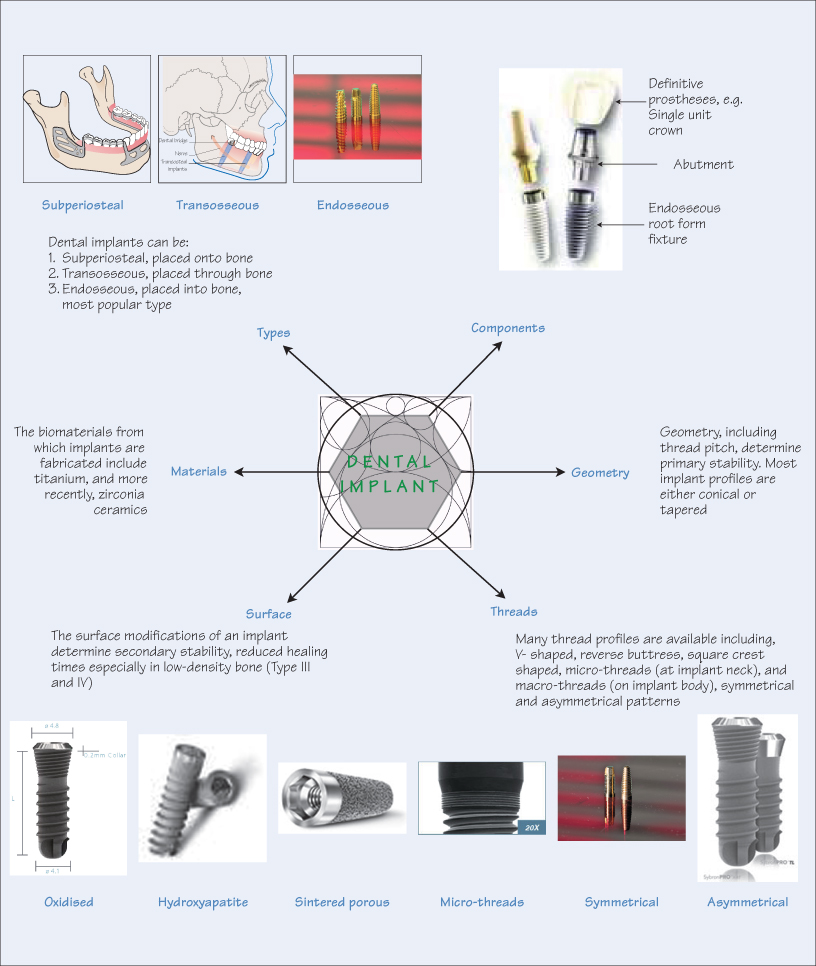53
Types and Configuration of Implants

Various criteria are used to categorise dental implants, including method of anchorage in bone, number of surgical procedures, materials for fabrication, configuration, type of connection (e.g. internal or external hexagon), dimensions, or the manufacturing company.
Types of Dental Implants
A dental implant provides support or anchorage for an intra-oral prosthesis. The basic types of dental implants are:
- Subperiosteal – placed onto the bone, custom-made for extensively resorbed alveolar ridges, usually involving CBCT scans to extrapolate the alveolar morphology, and using CAD/CAM software a bespoke titanium framework is constructed and surgically placed after flap elevation;
- Transosseous – placed through bone, usually in the mandible, but due to the extensive surgical protocol, their use today is almost redundant;
- Endosseous (endosteal) – placed into bone:
Plate or blade form – thin cross-section metal pieces, 65% narrower than root form implants, indicated for narrow ridges not amenable to bone grafting;Ramus frame – long metal plates inserted into a resorbed mandible from the chin to ramus;Zygomatic – for severely resorbed maxillae;Basal (lateral) implants placed via a palatal approach in the maxilla;Root form – mimicking the morphology of natural tooth roots, either screwed or pushed (press-fit) into the prepared osteotomy;Mini-implants or small diameter implants (SDIs) – same as root form but with small diameters (<3 mm). Uses include retaining overdentures, transitional implants for supporting provisional prostheses awaiting integration of larger diameter implants, and orthodontic anchorage.
Virtually all contemporary dental implants are endosseous root form, and the discussion below is therefore limited to these varieties.
Materials
The material from which a dental implant is manufactured be biocompatible, />
Stay updated, free dental videos. Join our Telegram channel

VIDEdental - Online dental courses


